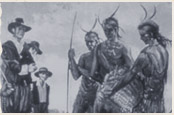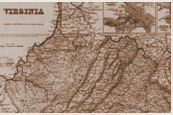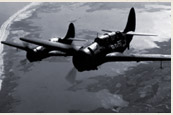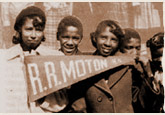Nisei Linguists
U.S. Army Center of Military History
Nisei Units in World War II
Virtual Museum of the City of San Francisco
Description: The first resource presents a paper delivered at a recent Conference of Army Historians. It recounts the contributions of Nisei (second generation Japanese-American) citizens who spoke fluent Japanese and aided the Pacific War effort greatly, though they were constantly discriminated against. This resource will serve primarily as good background material for teachers and/or advanced students. (Secondary source material). The second resource presents a digitized article from the San Francisco Chronicle, 1995, that recounts simply and movingly some of the personal experiences of Japanese-American citizens and soldiers in World War II. (Primary source material - oral interviews).
Teaching Tips:
"Do Now" Suggestion
- One theme of the San Francisco Chronicle article is the differences between the Hawaiian and the mainland Japanese soldiers in the 100th/442nd division. Before reading the article, students can brainstorm about possible differences, but also similarities, between these two groups of Japanese-American soldiers. As the students read the article, they can add to and edit their prereading brainstorms.
- The most relevant section of the Nisei Linguists paper is the section "Race." Students can read the section and either the teacher or the students can choose 5-10 statements to include in a Reading for Meaning Organizer. In a RFM Organizer, the students have to decide to agree or disagree with the statements and find evidence (in this case, from the article "The Conflict Behind the Battle Lines" from the San Francisco Chronicle) to support their choice. The steps of the exercise are as follows: a) Students read the "Race" section of the Nisei Linguists Paper; b) Teacher gives students a Reading For Meaning Organizer, which contains statements from the paper (either teacher or students decide on statements) ; c) Students read the San Francisco Chronicle article to use as evidence for their RFM Organizer. Reading For Meaning Organizer: This is just one example of a statement, but the teacher and students could come up with as many as they find interesting. After students read both pieces, the teacher can facilitate a discussion on the subject of Japanese-American soldiers. Possible questions include: a) If you were a Japanese-American during WWII, would you have volunteered to fight? Why or why not? b) In what ways were the Japanese-American soldiers particularly valuable to the American army? c) Do you think that other Americans respected the valor of the Japanese-Americans soldiers at the time? c) What were the differences between Hawaiian and mainland Japanese-Americans and how did the two groups reconcile these differences?



